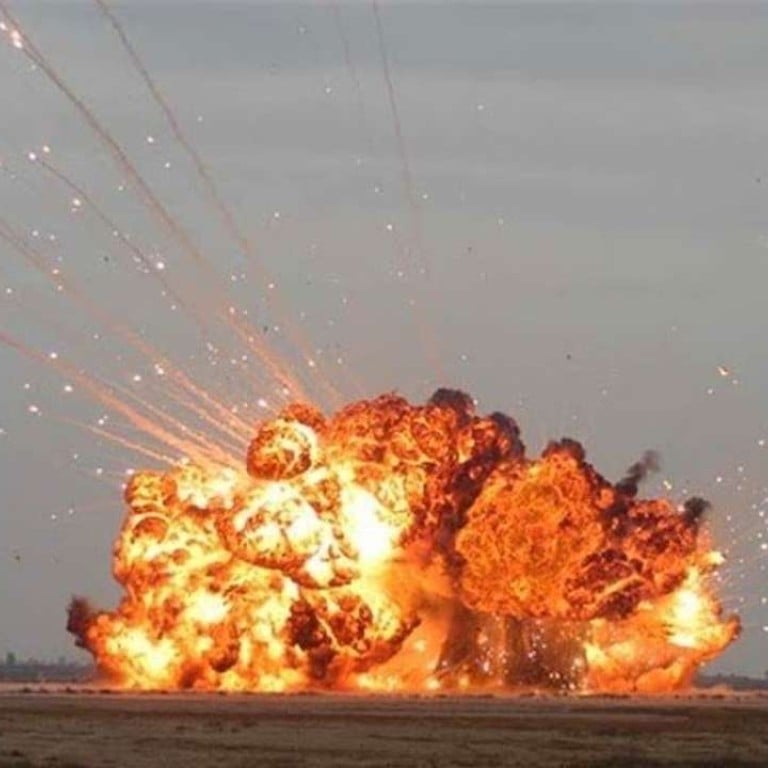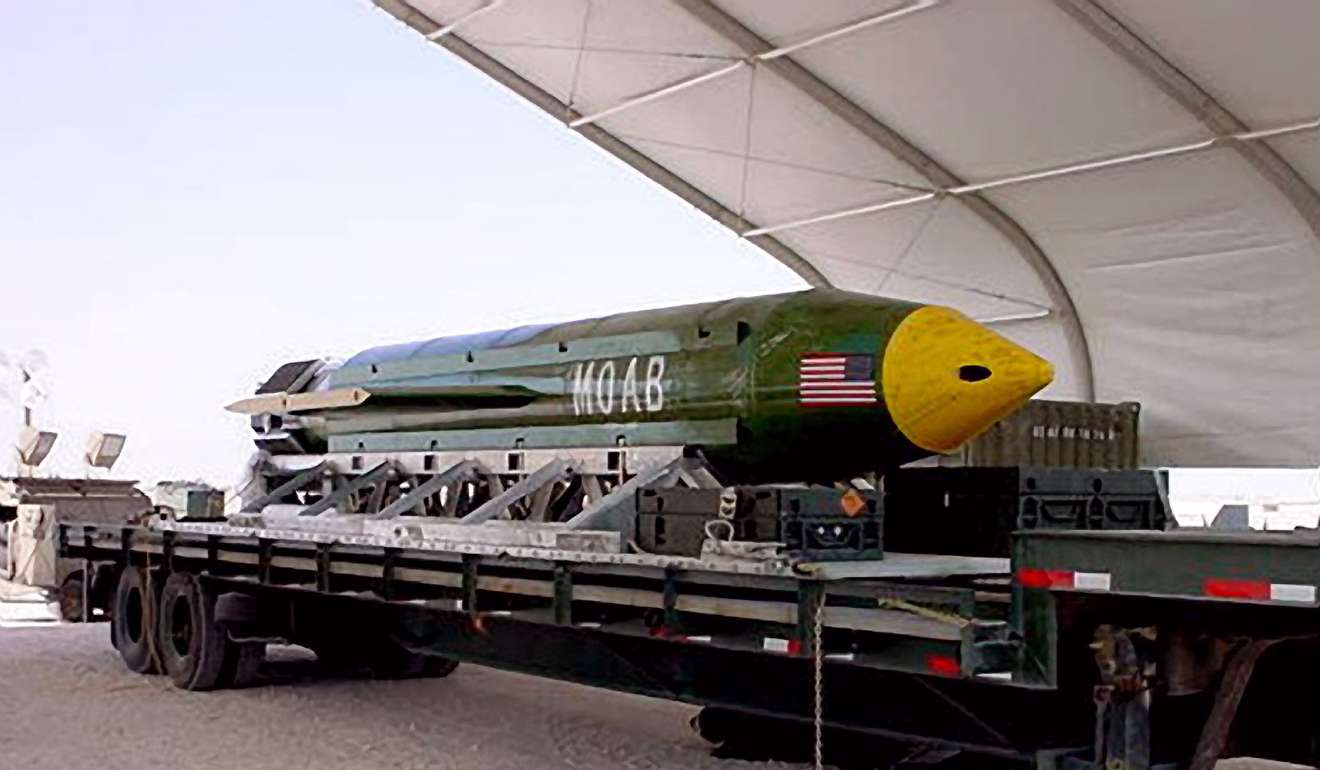
The ‘father of all bombs’ is Russia’s answer to America’s powerful MOAB
The bomb, the Massive Ordinance Air Blast, nicknamed the “mother of all bombs” because of its acronym, is the largest non-nuclear bomb in the US arsenal.
But Russia has an even bigger one.
The so-called father of all bombs is about four times as big as the MOAB.
It’s a thermobaric bomb with a destruction radius of nearly 300 metres and a blast yield of nearly 44 tonnes of TNT.
Thermobaric weapons differ from conventional bombs in that they combine with atmospheric oxygen to greatly extend the blast radius.
Watch: Russia tests the ‘FOAB’
Developed in 2007, the FOAB explodes in mid-air, igniting a fuel-air mixture. It vaporises targets and collapses structures, producing blasts and aftershocks as powerful as a small nuclear blast but without the same radioactive fallout.
The destructive power of the comparatively smaller MOAB, with a blast yield equivalent to 11 tonnes of TNT, is nothing to be sneezed at, however.
In Afghanistan, Achin District Governor Esmail Shinwari said the bomb landed in the Momand Dara area.
“The explosion was the biggest I have ever seen. Towering flames engulfed the area,” Shinwari said
“We don’t know anything about the casualties so far, but since it is a Daesh (IS) stronghold we think a lot of Daesh fighters may have been killed.”

US Navy Captain Bill Salvin, spokesman for US Forces Afghanistan, said that a bomb damage assessment was being carried out.
As to the possibility of civilian casualties from such a huge weapon, Salvin said: “Friendly forces scouted the area and noted the lack of civilian presence. The target was chosen to ensure the maximum effect against (IS) while preventing civilian casualties.”
The MOAB was rapidly developed in 2002-2003 around the time of the US-led invasion of Iraq.
According to the Air Force, the last time the MOAB was tested in 2003, a huge mushroom cloud could be seen from 32 kilometres away.
The MOAB isn’t the heaviest non-nuclear bomb in the US arsenal — that’s the 13,600 kg Massive Ordinance Penetrater — but with a length of 9 metres and an estimated cost of $15.7 million, it’s a significant piece of military equipment.
The US Air Force bought 15 MOABs from Boeing in 2011, so the deadly machine represented more than 6 per cent of the total US stockpile of such weapons.
Business Insider, Agence France-Presse
